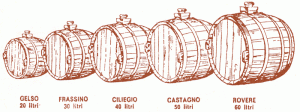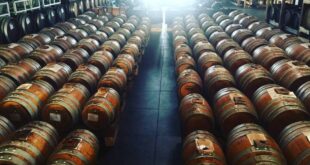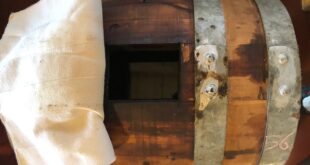How Travasi and Rincalzi of the Traditional Balsamic Vinegar takes place? Every year in the vinegar cellars comes the moment of “Travasi” (pouring) and “Rincalzi” (addition) of the vinegar,in the period that follows the harvest and cooking of the must.
But how and when Travasi and Rincalzi of the Traditional Balsamic Vinegar takes place?
Traditional Balsamic Vinegar of Modena is obtained from the must of the Trebbiano and Lambruscho grapes, which grows and are harvested exclusively in the territories of Modena. In early October, the must is cooked slowly at a constant temperature. When the cooked must is reduced to about half of its initial volume, it is racked and sealed in glass jug to cool down. After a month, the cooked must is racked and sealed in another glass jug. This process is repeated in total for 5 / 7 times until a brown film is formed at the bottom of the jug. When the film is formed, it is time to pour the young vinegar into a series of wooden barrels to let the aging process go on.
The set of barrels, in which the Traditional Balsamic rest, is called “Batteria” (array). The array of barrels is usually composed of 5 to 7 barrels of decreasing dimensions. The largest can contain about 60-70 litres and the smallest that can have a capacity from 10 to 5 litres. The barrels are made with different types of wood (oak, cherry, ash, chestnut, juniper and mulberry) that give the product a natural aroma and influence its consistency and colour.
 For the moment of Travasi and Rincalzi of the Traditional Balsamic Vinegar in the creation a battery, the choice of wood is fundamental. Generally, it tends to use lighter, porous woods (Cherry, Mulberry) for larger barrels (Array Head) because they facilitate evaporation through a good exchange of oxygen, necessary at the time of fermentation. For the smaller (Arrayy Fashion), instead barrels of hard woods (Durmast and Locust tree) are used, because they are well suited to the aging phase of the product. Finally, in the central part of the battery, semi-hard wood (Chestnut, Ash) takes care of the maturation phase.
For the moment of Travasi and Rincalzi of the Traditional Balsamic Vinegar in the creation a battery, the choice of wood is fundamental. Generally, it tends to use lighter, porous woods (Cherry, Mulberry) for larger barrels (Array Head) because they facilitate evaporation through a good exchange of oxygen, necessary at the time of fermentation. For the smaller (Arrayy Fashion), instead barrels of hard woods (Durmast and Locust tree) are used, because they are well suited to the aging phase of the product. Finally, in the central part of the battery, semi-hard wood (Chestnut, Ash) takes care of the maturation phase.
Balsamic vinegar is taken from the smaller barrel and bottled as a final product. After that, it is necessary to level the liquid of the smallest barrel, in order to compensate the collection of the finished product, and also that of the other casks, which due to evaporation undergo an annual decrease in their content.
Once the “Travasi” (pouring) have been completed, the barrel of head will in turn be levelled with the “Rincalzo” (addition) of cooked must obtained from the last harvest or, if present, contained in the “Botte Madre”(Main Barrel). The importance of this operation is fundamental so that all those microbial transformations take place in the Balsamic Vinegar and will lead the Balsamic Vinegar to assume those characteristics typical of harmony of flavours and unparalleled symphony of perfumes.
Then every year, after having collected the quantity of Balsamic Vinegar that will be bottled from the smallest barrel, so that you can actually use Balsamic Vinegar, that has been just made, we go on to top up the smaller barrel with the liquid of the penultimate barrel and continue gradually to climb, until the first larger barrel that is topped up with the new boiled must. In addition, new acetified must needs to be added to the ageing process.
L-Originale Traditional Balsamic Vinegar of Modena: www.l-originale.com
 Use Balsamic Vinegar All you need to know about Balsamic Vinegar of Modena
Use Balsamic Vinegar All you need to know about Balsamic Vinegar of Modena



